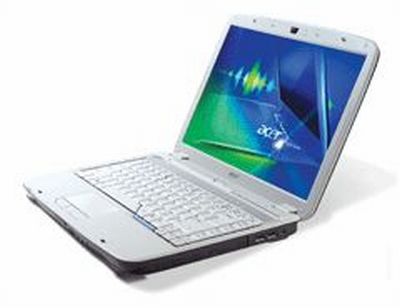Lenovo’s IdeaPad S10e isn’t just the S10 rebranded for the education market; it offers some features its successful predecessor doesn’t, including a Quick Start OS and a long-lasting six-cell battery. If you’re charged with buying a notebooks for a K–12 one-to-one laptop program or want a secondary computer for the home that the kids can use, the S10e, at $429, is a strong contender.
Design
Although aimed at children, the S10e has a design mature enough to appeal to grown-ups. The lid comes in an understated gunmetal gray, and although glossy, it doesn’t pick up smudges. Inside, the chassis, keyboard, and palm rest are all matte black, but turquoise and white accents on the keys keep the system from looking dull.
At 2.8 pounds, the S10e is the same weight as the MSI Wind U120 but 0.1 inches thicker. Particularly compared with the CTL 2Go Convertible Classmate PC, a 3-pound tablet with a handle and 1.5-inch-thick chassis, it seems svelte. Even with the six-cell battery jutting out slightly in the back, the 9.8 x 7.7 x 0.9–1.4-inch S10e was easy to hold in the crook of our arm.
Keyboard and Touchpad
The keyboard stretches almost all the way across the 7.7-inch-wide chassis, with little room to spare on the sides. Even for our adult hands, the layout was large enough; we were able to score 83 words per minute on the online typing test Ten Thumbs (we scored 88 words per minute when we took the same test on our desktop computer). The keyboard showed visible flex, but in general the keys had a nice, springy feel.
The biggest turnoff on the S10e is the shrunken right Shift key, which is located to the right of the up arrow. We much prefer  netbooks with layouts that position the right shift key to the left of the up arrow—such as on the HP Mini 1000 and MSI Wind U120 —so you don’t accidentally move up a line when you intend to capitalize a letter.
netbooks with layouts that position the right shift key to the left of the up arrow—such as on the HP Mini 1000 and MSI Wind U120 —so you don’t accidentally move up a line when you intend to capitalize a letter.
Although the touchpad is tiny, measuring 2.3 by 1.1 inches , it felt large enough for dragging the cursor across the screen. But when we used two fingers to pinch and expand Web pages using the S10e’s multitouch capability, we craved more room. Plus, Web pages looked a bit jerky as they resized themselves. The two discrete metal touch buttons were easy to press, but on the loud side.
http://www.laptopmag.com/review/laptops/lenovo-ideapad-s10e.aspx